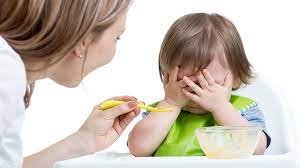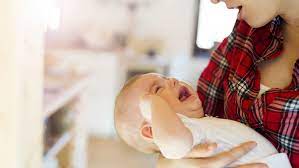
Why play is important ?(Suitable for 0-8 years )
shahennews
The importance of play
Play is central to your child’s learning and development. When your child plays, it gives her lots of different ways and times to learn.
Play also helps your child:
- build confidence
- feel loved, happy and safe
- develop social skills, language and communication
- learn about caring for others and the environment
- develop physical skills.
Why is play so important for child development? In this video, experts explain that play gives children different sensory, physical and cognitive experiences. Experiences build connections in the brain, which helps children develop physically, cognitively, socially and emotionally. That’s why children’s play is like ‘fireworks’ going off in the brain.
Different types of play
Unstructured, free play is the best type of play for young children.
This is play that just happens, depending on what takes your child’s interest at the time. Free play isn’t planned and lets your child use his imagination and move at his own pace.
Examples of unstructured play might be:
- creative play alone or with others, including artistic or musical games
- imaginative games – for example, making cubby houses with boxes or blankets, dressing up or playing make-believe
- exploring new or favourite play spaces like cupboards, backyards, parks, playgrounds and so on.
You can be part of your child’s unstructured play – or not. Sometimes all you’ll need to do is point your child in the right direction – towards the jumble of dress-ups and toys on her floor, or to the table with crayons and paper. Sometimes you might need to be a bit more active. For example, ‘How about we play dress-ups? What do you want to be today?’
Structured play is different. It’s more organised and happens at a fixed time or in a set space. It’s often led by a grown-up.
Examples of structured play include:
- water familiarisation classes for toddlers, or swimming lessons for older children
- storytelling groups for toddlers and preschoolers at the local library
- dance, music or drama classes for children of all ages
- family board or card games
- modified sports for slightly older children, like Cricket Blast, Aussie Hoops basketball, NetSetGO netball, Come and Try Rugby, and Auskick football.
How play develops with your child
As your child grows, the way he plays will change – he’ll get more creative and experiment more with toys, games and ideas. This might mean he needs more space and time to play.
Also, children move through different forms of play as they grow. This includes playing alone, playing alongside other children and playing interactively with other children.
Newborns and babies: play ideas to encourage development
For babies, the best toy is you. Just looking at your face and hearing your voice is play for your new baby, especially if you’re smiling.
You might like to try the following play ideas and activities with your little one:
- Music, songs, gentle tapping on your baby’s tummy while you sing, or bells: these activities develop hearing and movement.
- Peekaboo: this is great for your baby’s social and emotional development.
- Gentle tickles, or objects with different textures, like feathers, mud, metal or foam: these develop the sense of touch.
- Objects of different sizes, colours and shapes: these can encourage your child to reach and grasp.
- Sturdy furniture, balls, toys or boxes: these can get your child crawling, standing and walking.
Regular tummy time and floor play are very important. Tummy time helps your baby develop muscle strength and control. It also lets your baby see and experience the world from a different perspective.
Toddlers: play ideas to encourage development
Here are some ideas your toddler might enjoy:
- Big and light things like cardboard boxes, buckets or blow-up balls can encourage your child to run, build, push or drag.
- Chalk, rope, music or containers can encourage jumping, kicking, stomping, stepping and running.
- Hoops, boxes, large rocks or pillows are good for climbing on, balancing, twisting, swaying or rolling.
- Dress-up games with scarves, hats and so on are good for imagination and creativity.
- Hills, tunnels or nooks can encourage physical activities like crawling and exploring.
If you put on some favourite music while your toddler plays, she can also experiment with different sounds and rhythms. You might also like to sing, dance and clap along to music with your child.
Preschoolers: play ideas to encourage development
Here are some ideas to get your preschooler’s mind and body going:
- Old milk containers, wooden spoons, empty pot plant containers, sticks, scrunched-up paper, plastic buckets, saucepans and old clothes are great for imaginative, unstructured play.
- Simple jigsaw puzzles and matching games like animal dominoes help improve your child’s memory and concentration.
- Playdough and clay help your child develop fine motor skills.
- Favourite music or pots and pans are great for a dance concert or to make up music.
- Balls can encourage kicking, throwing or rolling.
When you’re encouraging your child to kick or throw, try to get him to use one side of his body, then the other.
School-age children: play ideas to encourage development
Your school-age child can have fun with the following objects and activities:
- Furniture, linen, washing baskets, tents and boxes are great for building cubbyhouses.
- Home-made obstacle courses can get your child moving in different ways, directions and speeds.
- Games like ‘I spy’ are great for word play and help develop literacy skills.
- Simple cooking and food preparation activities are great for developing numeracy and everyday skills.
- Your child’s own imagination: with imagination, your child can turn herself into a favourite superhero or story character.
If your child is interested, you could think about getting him into some sports or team activities for school-age children. Other possibilities include after-school or holiday art and craft activities.
raisingchildren






